Leaderboard
Popular Content
Showing content with the highest reputation on 06/08/19 in all areas
-
Evening All And here is catch-up number 2......and that's it, for the planes anyway. Here's an OOB build of Tamiyas Ki-61. I picked this up from my local for an easy build that would add a little colour to the cabinet. And wow, what a kit ! Fit and detail is pretty special, I didn't use any filler at all with this build. This was my first real attempt at freehand airbrush mottling so I practiced on scrap plastic tubs until I was happy with the paint thickness and air pressure before touching the plane. I'm pretty happy with the way it turned out. And here it is......... If anyone is interested, here's my method for the mottling. Airbrush / paint specs used for the mottling. Airbrush - H & S Infinity Needle Size - 0.2 Needle Cap - removed Paint - well thinned Tamiya Acrylic XF-13, thinner than for normal airbrushing. Air pressure - 10psi Method - practice on primed scrap plastic card (ice cream tub). Adjust the paint thinning / air pressure balance, and set the needle position stop so that thin lines can be sprayed up close without the paint spitting or blowing out into little spiders. Practice spraying small circles/dots. Practice mottling by moving the airbrush in very small circles/spirals and build up the colour density gradually....keep the airbrush moving at all costs. Take a deep breath and have a go at painting the model. HTH Gaz I need to sort out the ariel wire again by the look of it In the cabinet - next please Thanks for looking Cheers Gaz25 points
-
Hi All - here's my recently finished Il-2 - built with the newish Tamiya kit - Kit was very nice and went together very easily. Painted with Tamiya acrylics for the most part, weathering with AK and Mig washes along with oils and pigments. Built pretty much OOB and used the kit decals - replaced the guns and pilot tube with needles and used mig rigging for the antennae. Also added an eduard PE seatbeat to the pilot seat and Brassen resin wheels. It was a very enjoyable build and really enjoyed using oil paints to weather the airframe - I seem to have turned a corner with this technique so I'm looking forward to doing more of this. You can check out the WIP thread here: Thanks for watching Cheers John22 points
-
Hi folks There's been a couple of these posted recently I think, but as this is only my third completed build this year I've decided to put it out there anyway. Regards J.A.20 points
-
Good to see someone have at this version Ced, not many radial Whitleys get made, which is a shame, as to my jaded eyes it's the best looking version. I built an Airfix/DB Resins conversion a while back which worked out OK, mainly due to the Airfix kit being an excellent starting point. Never built a Fly kit so it'll be interesting to see what you do with it. Hope you don't mind me posting an image of mine to show folks what the old jalopy looks like...15 points
-
Here is a just completed Harrier. I started with a Revell boxing of the Hasegawa Harrier GR7 and decided to build it as a USMC machine form VMA-214. Of course there are a few differences between the two marks, I tried to replicate most of them. I part of an Eduard etch set in the cockpit, a Pavla ejection seat and exhausts and speed break from Quickboost. Decals are from a Wolfpak sheet.14 points
-
Here is my take on Airfix Mil Mi-24 Hind A from kit number 05023 this kit gives you the option to do Hind A or D i have done it with Russian markings13 points
-
13 points
-
Good afternoon gentlemen Finally, I've finished this model. Painted with Tamiya and Gunze colours. Roundles with David's stars, Scorpions (on the tail) and serial numbers (558) were painted by masks (The masks are made by: https://heroesmodels.it/ ) 20190805 - 041 FINITO by Matteo Zarantonello, su Flickr 20190805 - 042 FINITO by Matteo Zarantonello, su Flickr 20190805 - 043 FINITO by Matteo Zarantonello, su Flickr 20190805 - 044 FINITO by Matteo Zarantonello, su Flickr 20190805 - 045 FINITO by Matteo Zarantonello, su Flickr 20190805 - 046 FINITO by Matteo Zarantonello, su Flickr 20190805 - 047 FINITO by Matteo Zarantonello, su Flickr 20190805 - 048 FINITO by Matteo Zarantonello, su Flickr 20190805 - 049 FINITO by Matteo Zarantonello, su Flickr 20190805 - 050 FINITO by Matteo Zarantonello, su Flickr Have a nice summer at all. Cheers12 points
-
Oh, I was, Stew, I was! At one point I seriously considered chucking it all in and selling off the stash, but three things stopped me: 1. I worked really hard to get some of these kits that I'm too nervous to build. 2. It's very hard to sell 400 1/72 kits, especially in the USA, where everyone builds 1/48 (hacks, spits). 3. What the hell would I talk to all of you about when I went to Telford? So there was no choice but to get back into it. It's just my filing system in full expression, something that's no longer possible outside the grotto, where Mrs P "helpfully" moves things I've left seemingly haphazardly about the house (but which are actually carefully placed so that I encounter them at the precise moment I need them). Upstairs, it's like going insane, since nothing stays where I put it, but down here? Perfection. Bliss. I'm doing the same right now, in fact!11 points
-
Thank you John, I appreciate that Thanks Tony, glad you like it The dry wipe marker is something I discovered just recently, but I thought I had already mentioned it - memory failure, again Glad if it can be of any help (late) MondayUpdateTM, everybody I had a pretty busy WE, spending most of the Sunday at Milan Malpensa airport: my eldest and middle daughter left for a couple of weeks of English school in England, but two different destinations, two different terminals, two different flights ... long story short, I didn't do much. Here's what I did do, however: using @TheBaron's trick, I resurrected some of the white milliput leftover from the spine/airbrake treatment (meaning that I stored it in the freezer right after using it); it bl...y works, thanks Tony! Fresh as just kneaded, I used it to fill in the front gap between the resin part and the fuselage and a few other spots along the airbrake edges and the spine More refinement needed, but I'll use PPP for that. Then it was time for some paint; masking first then Tamiya Flat Black, airbrushed, thinned with cellulose, and a couple of Aqua Gloss light coats Then some dry brushing with Dark Grey and Light Gull Grey (Lifecolor, in this case) and eventually some detail painting by brush, followed by a flat coat, using Italeri Flat Clear (again by brush) That's it, basically. All comments welcome Ciao11 points
-
Hello! Here are some pics of model that was built last year, but was waiting for the right moment to come out. This is the well known Special Hobby kit, with Vallejo Model Air Vallejo e Mission Models paints. I want to leave a warm Thank You to a fellow Portuguese modeller - Paulo Lopes, for the inspiration provided by his work on this kit, which got me through - Obrigado! Here is a link for the detailed construction and painting process of the Buckeye. https://imodeler.com/2019/08/greek-master-special-hobbys-1-32-t-2-buckeye/10 points
-
Hi everybody Here´s another Mig-29 and the ambition from my part was to depict a rather weathered individual. For that part I used the Gunze range of colours, H305, 308, 320 and 325 and I added matt white and flesh (H44) to different degrees for the post shading process. I also experimented using oil on some panels to fade them even more. The exhaust were painted with Alclads "Exhaust", "Pale Burnt Metal" and "Transparent Blue". I also used Model Masters "Exhaust" for the inner parts of the exhaust. Apart from that an artist silver pencil from Derwent was applied here and there, to simulate chipped paint. The leaks are all from AK´s Streaking Grime, which in my opinon works very well on flat surfaces. The "office chair" is from True Details and the Pilot climbing on Eduards ladder is from Aerobonus. I used some "artistic license" on this project, for instance the pilots dress should in reality be blue, but that made him look to much of a smurf in my eyes. I Also used the decals from Begemot sheet 48-012, under the devise, "if it looks cool it´s right". Finally for the construction of the base plate a I used a single sheet of Plasticard which I scribed and glued some grass randomly. Thanks for looking and I hope you enjoy the pics Cheers Göran10 points
-
My take on the Airfix 1/72 kit number 9 05017 Mil Mi-24 Hind version D done in the markings of the East German Air Force10 points
-
Evening All I've been slack at posting pictures this year, so it's time for a catch-up. Where has the year gone ??? Luckily for you I've been equally as slack with my build progress so there's not much to catch up on. So here's my OOB build of a 247 Sqn Sqn Typhoon that I built between January and April. I've notice that with lack of modelling time, recently, I'm tending to got for quick out OOB builds just to maintain some mojo. As far as I remember there were no major issues with the build. I did lose one of the Main Undercarriage Doors and had to scratch build a new one (the original later found under the paint bench and thrown in the spares box). Comments good, bad or indifferent welcome as usual. I hope you like it. Cheers Gaz The look I was after was of a used aircraft with fresh(ish) painted stripes. At first I thought that the stripes would be a little lairy, but then thought that they might add a little dazzle to the cabinet; another reason to go OOB. I tried using AK Interactive's chipping and wear fluid again on this one. The foolishness of intentionally making the paint not stick properly was quicky highlighted when I started masking other bits and pieces. The invasion stripes were masked and sprayed, and lots of touch-ups were needed. Thanks for looking10 points
-
Yes........that one ! Hi everyone, This is my first RFI over this neck of the woods. One day I decided I wanted to build a car, more specifically an F1 car. I duly snapped one up from a local auction site but the deal took ages to go through. I still had this itch to build a car when my local got this kit in stock. I remember the days when Escorts were common as muck, and I always liked the Rothmans scheme (although better on Mantas and Hondas ) so I snapped this one up. The issues with this kit seem to be well documented so I concentrated on the process of building a car rather than doing anything flash. I did jack the back end up a bit to make it less squat but the springs are now quite visible. The camber on the back wheels is quite iffy as well. The paint was my first time using Tamiyas laquer paints (white and clear) through an airbrush I'm pretty happy with how they performed. To be honest, I'm pretty happy with the way it all turned out and it was good practice for doing a decent car.......a Manta 400 Anyhoo, here it is. Comments welcome Cheers Gaz I forgot to do the bonnet clips ! It's hard to see here but I did fashion up some throttle linkages and a cable. Thanks for looking. Cheers Gaz9 points
-
Righty-ho, here's another completion for the year, KP's re-issue of the RV Aircraft 1/72 MiG-21UM in Cuban colours. Colours are a mixture of Humbrol and Xtracolor; an old tin of Humbrol Authentic HG10 German WW1 Blue combined with 117 US Light Green for the uppersurface and 65 Aircraft Blue for the underside. Xtracolor X629 Soviet Cockpit Green/Blue, X628 Eastern Bloc Wheel Hub Green, Revell 6 Tar Black and various Humbrol colours were used for the details. Decals are from Aztec Models' "Castro's Raiders" sheet. The model is semi-fictional as I went with the theory that MiG-21UM "Black 526" was probably initially camouflaged in the typical Green/Blue scheme and later repainted in to it's current Green/Sand/Brown one. I also used THIS image as a guide with some interpretation of other pictures of Cuban MiG-21's from THIS page and elsewhere. A little history culled from the 'net: The kit itself is OK, but is typical limited run offering in that plenty of test fitting and filler is needed. It comes with two canopy options - a single part one for display closed and a three piece one so you can display the canopy open. I cracked the single piece one and had to use the three part one instead. Surprisingly the multipart canopy was a better fit! I used NH Detail's MiG-21MF Exterior and Quickboost's MiG-21MF Air Scoop sets as the kit is missing a few items (namely the "Odd Rods" IFF antennas) and the kit air scoops are a bit "blobby"! Now for the photos: Comments welcome! Mike.9 points
-
9 points
-
Hi guys, As promised, these are the pics from the construction of this model of mine ( https://www.britmodeller.com/forums/index.php?/topic/235057671-grumman-f-9f5-panther-monogram-148-walkaround/ )built some 15 years ago…:8 points
-
8 points
-
8 points
-
The early Javelins were so inadequate and had many vices in handling that it led to test-pilot Bill Waterton leaving Glosters and the writing of his infamous book 'The Quick & The Dead', this resulted in a legal battle between him and the company. I work at St Athan and there are older colleagues here that remember Javelins being delivered for scrap in large numbers at a time, many of them had very low flying hours. It seems like the later versions became capable machines. Somehow though I'm fascinated by the Javelin, it does look good, especially when you get up close to one. Looking forward to your treatment of the subject Bill! Gloster Javelin FAW.1 XA466 87 G Sqn, 1961 by James Thomas, on Flickr8 points
-
Source: https://vk.com/zvezdamodels?w=wall-29859496_2435470 V.P.8 points
-
8 points
-
SNCAC Martinet. Europe 272 CASA 352L Europe 273 Klemm Kl 35B. Europe 274 Arado Ar 79. Europe 275 Nord 1002 Pengouin. Europe 276 Bf 109E. Europe 277 Nude Gotha Go 242. Europe 278 Bucker Bu 181 Panzerfaust. Europe 279 He 162. Europe 280 Missiles and miscellany. Europe 281 Thanks for looking.8 points
-
Well I've cracked on with this, safe in the knowledge that it isn't going to be very accurate! As Graham says, this is the wrong mark of aircraft for the scheme so it's a three footer at least, but I wanted a quick fun build of something that hasn't been done yet in the GB. I tried to use the kit decals, but one of the roundels broke up on me so I used the C type roundels and stripes from the Airfix Spitfire 22 and the B type roundels from the Revell Blenheim (a FROG repop so on topic!) and Xtradecal codes. It isn't finished yet but I reckon a short evening will get me there. Thanks for looking, Adrian8 points
-
Another attractive civil release by Avis, again combining nice detail, good engineering, affordable price and appealing subject in short-run form. The box has alternate parts and even offers the perks of beaching wheels, a fuselage resting scaffold and a bench, all with multiple parts. How's that for a little kit? The Short Brothers S.1 Cockle (first named Stellite) was a one-off endeavor commissioned privately. First flying in 1924 it shows another effort by Short to master the intricacies of metal airplane building (seen also in the S.4 Satellite), having an aluminium hull and frame. The very small twin engine arrangement reminded of a scratch I did time ago, the Gnosspelius Gull, and what do you know, Mr. Gnosspelius was indeed attached to this project as I found out doing some research for this build. The prototype had some difficulty trying to separate itself from the water, and being marginally powered -to put it mildly- it was no surprise, but finally achieved flight by making some changes to the airframe. The original tail was later replaced by a larger and differently shaped one, and it ended up being used for some trials and experiments (The kit has both tails for you to chose from). Instructions tell you to paint the hull bottom and wing floats black, which is not unusual, but at least one clear photo shows the plane with no color whatsoever on those areas, having the hue of the rest of the plane, aluminium. A very unreliable small card drawing with the wrong registration found on the net shows those areas on red. The choice is yours. With all the recent Avis releases I am (flying) in heaven. It is not often that I get on a roll regarding manufacturers products, but after completing the Satellite, working now on the final stages of the Bristol Racer, and getting this one, I just had to start it. It calls you. Again, even as a short run offering effort is made to keep things clean, sprue gates small, and detail satisfying: Two horizontal and two vertical tails are offered: The detail is convincing: Even the minuscule Blackburne Tomtit engines are rather convincing for this scale: Decals for the two versions and the usual Avis film windshields: I will go back to the Bristol Racer for a little while, but I'll be back, as it was once famously said.7 points
-
Hi to all This post will not be anything special regarding model and quality of finishing. Simply i wanted to share with you my emotions. This was done in 3 days for my oldest modeller friend (80+) who wish to have Clostemann's Tempest for a long time but hi is not able to make any model for a years as his hands does not listen his eyes and hart anymore. As he was one who infected me with this hobby 50 years ago, i decided to make it asap for him. That was the story and you can not imagine how i was happy when i sow a old man happy as a child.....this is hobby which wakes kids in us forever. Sorry for bothering...but.... Model, Heller oldie, well known, decals from Revell boxing old almost the same, i had no time to chase fully historic correct decals...this was best what i can do in 3 days, lot of issues with colors, especially trying to not make mess with not fully dried colors (Humbrol enamels). Weathering done with pastels....and that is all. hope you like it. Best regards, and pictures at the end....7 points
-
Hi, It could be perhaps interesting for some BM memebers, that in net there is available a part of archive from Krakow;s Museum of Polish Aviation. The project is ongoing, so one can check the catalogue from time to time and will found new subjects. What I want to share are some information booklets or service bookd of French machines, which contain drawings and photos of inside of many airplanes also those never used in Poland, so it was a big surprise to me to find them there. Some examples: Amiot series 140 http://www.muzeumlotnictwa.pl/index.php/digitalizacja/katalog/330 Different Leo machines http://www.muzeumlotnictwa.pl/index.php/digitalizacja/katalog/1607 Bloch 131 http://www.muzeumlotnictwa.pl/index.php/digitalizacja/katalog/1129 Mureaux 115 http://www.muzeumlotnictwa.pl/index.php/digitalizacja/katalog/1130 Farman 221&222 http://www.muzeumlotnictwa.pl/index.php/digitalizacja/katalog/1138 Breguet XIX http://www.muzeumlotnictwa.pl/index.php/digitalizacja/katalog/889 http://www.muzeumlotnictwa.pl/index.php/digitalizacja/katalog/914 Potez XXV http://www.muzeumlotnictwa.pl/index.php/digitalizacja/katalog/614 http://www.muzeumlotnictwa.pl/index.php/digitalizacja/katalog/642 Of above only Potez XXV and Breg XIX were used in Polish AF between wars. There are many other interesting documents mostly on Polish, German, Soviet airplanes but not only. The whole catalogue of available items including log-books, collections of photos etc. is here: http://www.muzeumlotnictwa.pl/digitalizacja_archiwaliow/digitalizacja.php Cheers J-W7 points
-
I present to you my now completed model of a Spitfire Mk 22, as flown by 603 Squadron "City of Edinburgh" in the post war Royal Auxiliary Airforce. Spitfire PK 428 was built in the Salisbury group pf Supermarine factories and was fitted with a RR Griffin 61 engine. It was most probably flown from High Post Airfield to 33MU on 6-9-45 On 16-4-47 it went to RAF Chilbolton for modifications to cure elevator instability it was not posted to 603S until 5-5-48 where it stayed until 16-6-53. The following year it was sold as scrap by the MoS on 26-5-54. A short life. The model is based on the ancient Frog kit, later re-issued by Revell. I used the GreyMatter "Correction Set", which included a new nose, propellor spinner, blades, radiators, carb intake, canon barrels, canopy and 3 spoke wheels. Because of the weight of the nose resin casting I fitted Brassin U/C legs, which I later discovered are too short: the result is the Aircraft sits too close to the ground. The paint is Halfords Nissin Silver, the transfers are mostly from the later Revell kit, but with Squadron markings from the original kit. Although they looked aged, with a coat of liquid decal film they worked perfectly. The build is described here: It has been a long journey! The result looks reasonably good, but still has issues, partly due to the inaccuracies in the kit and partly to my lack of experience. Let me know what you think, please: be honest...but not too unkind! 1. Rear three-quater view. 2. From the Front: a pugnacious looking thing! 3. Now from above... 4. Front quater view. 5. And finally, from Underneath.7 points
-
But Heather, if they not are vac form, Ced doesn't get to use one of those Fritag dental forming suction tools that we all want. We so need more tools on this thread! Terry7 points
-
In the Gallery at last (and to boost the Frog kit completion stats), here is the Fokker F.VIIB-3M 'Southern Cross' - one of the 'Trailblazer' series of kits from Frog and a fascinating subject in that it was the first aircraft to cross the Pacific Ocean from the USA to Australia - I learned a lot about this aircraft and the pilot Charles Kingsford-Smith (later Sir Charles). All inspiring enough to spend the time adding a lot of detail not included with the original kit. Many thanks again to all the Britmodeller community who came along for the ride for their input and support and to the hosts @Rabbit Leader and @JOCKNEY for their hard work and dedication in administering and supporting this great GB. I would also like to thank.....(all right, all right, I know, on with the next kit!) Build thread is here.7 points
-
Ah I see how this works now. Show all the sprues, break summat, spill the tet then go onto a totally different model and ignore the kit that the thread was started for. All adds to the fun eh? lol. Steve7 points
-
Have you been on Baldrick's hooch with @general melchett again? I warned you there was no future in it! Martian 👽7 points
-
Holiday over, I am back in London, so for the first time in a fortnight the kit is in the same place as my tools and reference books - so some of yer actual modelling progress this evening. However, as the last few posts have already showed, visible progress will probably be measured in small steps for a while as I do some of Mr Merit’s job for him. 3 examples this evening. Exhibit A. Anchors. I have already alluded to the fact that the anchors in the kit are too small. To be frank, I was simply repeating what I have read in every single review of this kit; I hadn’t got round to actually checking the plastic. Oh. Em. Gee. On the right, the pathetic, emaciated, shivering wee orphan of an anchor presented by Merit. Seriously. On the left, the beautiful resin North Star anchor (still without its shank at this stage) that I intend to use instead. That Merit thing doesn’t look like it could hold a Bosun dinghy secure, let alone over 25,000 tons of aircraft carrier. And, lest you think I am exaggerating, here’s the resin pick held in the port hawse pipe with Blu-tac: [Incidentally, you might see that I have also opened up the hawse pipe on this side, using my trusty micro-chisels. Next stage is to reinstate the large “lip” surround with rolled Mulliput (though I will do all 3 at the same time, so not yet)] ...and here the real ship again: Exhibit B: mould ejector marks. The underside of the for’d Lewis Gun sponsons before treatment - top as un-touched kit, bottom with support struts sanded away (they will be replaced with brass): ...and after treatment: Exhibit C : scuttles. Here is a photo of the midships section of the starboard side: Note the 6 scuttles visible between the two galleries, above the armoured belt. Clearly grouped in 3 pairs (with a couple of the grilles I mentioned a couple of days ago). [This photo is before she had her de-Gaussing coil fitted]. Now here is the kit (with the centre 4 already filled & sanded, because I forgot to photograph it beforehand). 6 scuttles, yes, but exactly evenly spaced so it just looks... wrong. So, finally, here is the same area after some work - incidentally showing some examples of the brass I am going to use to sort out all these scuttles (again from the ever-splendid North Star). It feels a lot of work to get the basics right, but it’s worth it, I think - or will be once it’s done. Incidentally (and I suppose I shouldn’t be surprised by this by now), if you compare Merit’s rectangular johnsons at top right immediately above with the actual openings they’re supposed to depict (below the Carley floats 3 pictures up).... nope: no resemblance. To compound the joy, there were actually 2 sorts of rectangular scuttle-type thingies in Ark; the ones which are visible 3 photos up, and the ones visible as opened doors/deadlights in the bow shot at the top. And neither of them has that odd circular thing which appears in the centre of Merit’s version. I am still pondering what to do about these, with the current favourite being to sand off Merit’s and replace them with a simple rectangle, either brass or styrene (or even possibly some “waffer-thin” Verlinden self-adhesive lead sheet that I’ve been hoarding for about a decade). Ah well. On, on! More tomorrow Crisp7 points
-
Onto the second completed build and it was a really nice kit. Simple even for a novice like me, again nothing fancy just out of the box and again using Tamiya acrylic paints airbrushed. I really like this one and enjoyed putting it together6 points
-
Right, this summer seems to run with a speed provided by a high-revving small block backed up with a Muncie four speed and a positraction 12-bolt. I haven't touched a model kit for a few weeks as, well you know, the summer in Finland is short... I was astonished to see we are actually so far that even this GB begins! Now do I have a backlog, I sure do... But here's the Round2 model kits revamped AMT Camaro from my birth year, 1968. The kit dates originally even further, as it's based on a 1967 model year version that was just tweaked slightly, as was the actual Camaro too, from its introduction year model. You can't help noticing it's a '68, can't you? You have the choice of building her "stock" or... ...with "street machine features". I will build neither, I believe, sort of... Here's a peek at the plastic. I fell in love with the first gen Camaros ('67-'69) when I first met one. I was 13, I was vulnerable... V-P6 points
-
True... Beside I'm a pretty big bloke. I stand at 6'7" and it looks like they sewed two rugby players together to make me. Id block the view if i was down in front.6 points
-
Hi folk's as a break from trying to get the B-17 fuselage to stick together (nearly there) I cracked on with this one,cockpit is very sparse so I added side consoles which were decaled from spares and added the circular headrest from scrap sprue then the usual tape harness.no issues with the construction and a light sanding has left her looking ready for primer.I'm really torn as I like both schemes but think the BPF scheme would look good with a bit of paint shading and dry brushing of what are very crisp raised lines.6 points
-
6 points
-
So, now ready for take off. Here is the kit, see the instruction, FROG like. It comes OOB in the version on the boxart. modelldoc6 points
-
I think that the drawing has the rear of the aircraft based on a bf109? However I’m not going to try and bolt a 109 rear-end on, I’m going to ‘cut down’ the vertical stabiliser, rudder and tailplanes (thanks Pete) as I’m not aiming for an exact version of the drawing, just something that represents Christian's drawing. The Tamiya kit has a separate vertical stabiliser and fuselage spine, presumably to allow for either bubble top or razor back versions? The tip(s) of these were then removed with a fine razor-saw. I followed an existing panel line as a guide for the cut. Both of the tailplanes were given the same treatment. The spine, vertical stabiliser and rudder were fixed to the main fuselage. Next the tailplanes were attached. Next I’ll be attempting the rear cockpit section and fitting the windshield. until next time as always, any suggestions, criticisms or comments will be gratefully received. rgds John(shortCummins)6 points
-
Thanks guys, Another step closer now, tail rotor done which just leaves the winch to be painted and added, Still have the strop markings for the blades but we are almost done. Must look at an RAF Cab at some point as not to alienate the Crabs. Enjoy the phots chaps Regards Dan6 points
-
Another one finished - the 1/350 scale resin kit of an Oberon Class diesel submarine from ebay seller subsmodels..... I chose to finish it as HMS Opossum - wearing a roughly-applied camouflage scheme used when she was on special ops during the Gulf War. She also sported a sharkmouth - sourced as a decal from my spares box. It isn't 100% accurate but it looks OK... I think I may have overdone the 'weathing' a bit on the camo........ The camouflage makes a nice change from the all-black finish normally found on RN subs..... Ken5 points
-
5 points
-
The last assembly fitted, the winch. Just the blade slinging markings left and its finished5 points
-
I'm in general agreement with Moa on his interpretation of the Cockle as built in 1924. Standard practice for fabric covered structures at the time was a silver dope finish as this offered the lightest and best UV protection for the fabric, most photo's appear to be consistent with this finish for all flying surfaces. The fuselage registration is clearly painted on a white panel, so the fuselage as built isn't white. The fuselage was duralumin monocoque construction, and may possibly have been left bare metal, but I suspect not. The fuselage shows considerable tonal variation between photographs (typical of bare metal) but consistent tones across panels in the same photograph (untypical of bare metal, but possibly consistent with an aluminium painted finish?) This photo of a Short Bros duralumin hull under construction (not the Cockle) shows clear evidence of some sort of corrosion protective coating being applied on the joints between panels. There was a lot of concern at the time over the suitability of duralumin for airframe construction, in particular its corrosion resistance (and the Cockle ended up as a test sample to determine it's suitability). It would appear, therefore, that the hull was completely painted for corrosion protection as evidenced by the overall even tones, despite marginal performance expectations due to weight. After modification to the tail in early 1925 (new enlarged fin and rudder, and enlarged elevator) the Cockle is photographed on Rochester slipway with an RAF roundel on the fuselage, and it appears to have arrived at Felixstowe MAEE in this condition. There is a very clear photo of the Cockle after arrival at Felixstowe p84 of Tim Mason's The Seaplane Years, from this it is evident that:- The wing has not been refinished, the civil registration is still evident and it appears to be silver dope overall. The tailplane has the same tonal finish as the wings, if these also haven't been refinished they may still carry the earlier G marking (position obscured by wing float) The new fin and rudder also have the same tonal finish, these are most likely silver dope overall as well - no sign of the MAEE script on the fin or rudder stripes as per kit decals, these may have been added later but I haven't seen any photo to prove it. The fuselage has a large RAF roundel immediately aft of the wing, and the RAF Serial "N 193" in black? midway between the roundel and tailplane leading edge. The fuselage and wing floats have the same all over light, even finish. This is lighter than the wing silver dope, and very close in tone to the white of the roundel. These have obviously been refinished from the civil scheme my feeling is overall white, but it could possibly fresh aluminium paint. Planing bottoms are the same as the hull and float overall colour. The wing and tail centreline struts have the same finish as the hull, but the outer struts from hull side to wing and tailplane underside are very dark (not shadow whencompared with centreline struts), these are most likely black enamel. These may have been black in the earlier scheme, but none of the photos are clear enough to determine if this is shadow effect or not. Hope you find the above as circumstantial evidence/informed speculation, I'm really enjoying your light plane builds especially the British ones, and have no intention of strangling the life out of the thread.5 points
-
I was right about the Whitley, but wrong about the course; it appears to have been a module (not a very 1944 word, I suspect) on Navigation - ASV came next, starting with that all-important first trip entitled “Switching on procedure”. History does not relate whether BD480 (in which my father flew several trips) was a Mk.3.5 points
-
Ah, like me then (according to John Richardson) you're a 'Putter' and Mrs P (like my other half) is a 'Leaver'. I know where I put things and she doesn't know where she's left things… Luckily (I guess) you can't have two putters together as they'll kill each other over which way to orientate the bean tins in the cupboard…5 points
-
When I was on holiday in the USA many years ago I was congratulated by an American lady on learning their language ! Its a memory that will stay with me for a long time....5 points
-
So after touching up the paint and a coat of Future, we get to here.. Revell Star Wars AAT (7) by Dermot Moriarty, on Flickr Next up was a coat of Flory Models wash and some chipping with Aluminium paint applied with a scouring pad. Revell Star Wars AAT (8) by Dermot Moriarty, on Flickr Thanks for looking. Dermot5 points
This leaderboard is set to London/GMT+01:00


.thumb.jpg.87669a5ffb8b13672a3d675087a46d42.jpg)


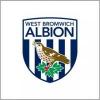
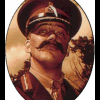



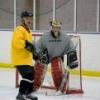

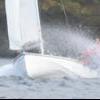


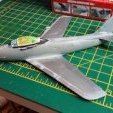
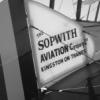




.thumb.jpeg.3d611c81664352682eed0e29aa7193e4.jpeg)











